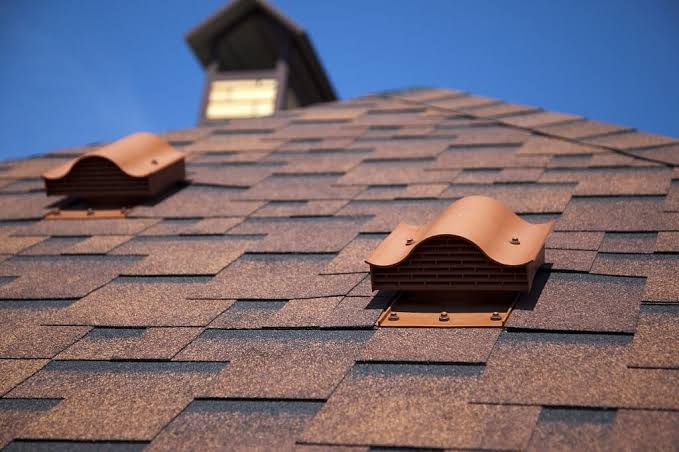Roof ventilation plays a vital role in maintaining a healthy, energy-efficient home. Proper ventilation allows air to flow through the attic or roof space, preventing excess heat, moisture buildup, and other issues that can compromise a home’s structure and comfort. Whether installing a new roof or upgrading an existing one, understanding the importance of ventilation is crucial for making informed decisions.
This article explores the mechanics of roof ventilation, its benefits, and how to ensure your system is working efficiently.
1. What Is Roof Ventilation?
Roof ventilation is the process of allowing air to circulate through the roof space, using a combination of intake and exhaust vents:
- How It Works
- Intake Vents: Typically located along the roof’s eaves or soffits, these allow fresh air to enter.
- Exhaust Vents: Positioned at the roof’s ridge or gables, these let warm, moist air escape.
- Types of Roof Ventilation Systems
- Passive Ventilation: Relies on natural airflow, such as wind and temperature differences, to circulate air.
- Active Ventilation: Uses powered vents or fans to enhance airflow, ideal for larger or poorly ventilated spaces.
2. Benefits of Proper Roof Ventilation
Investing in a well-designed ventilation system delivers numerous advantages:
- Prevents Moisture Damage
- Excess moisture in the attic can lead to mold, mildew, and wood rot, compromising the roof’s structural integrity.
- Extends Roof Lifespan
- Ventilation reduces heat buildup, preventing premature aging of shingles and underlayment.
- Improves Energy Efficiency
- By maintaining a consistent attic temperature, ventilation reduces the strain on heating and cooling systems, lowering utility bills.
- Enhances Indoor Comfort
- Proper airflow minimizes temperature fluctuations, ensuring a comfortable living environment.
3. Signs of Poor Roof Ventilation
Identifying ventilation problems early can prevent costly repairs:
- Excessive Heat in the Attic
- A poorly ventilated attic feels excessively warm, especially during summer.
- Moisture Buildup
- Signs include condensation on windows, damp insulation, or a musty smell in the attic.
- Ice Dams in Winter
- Inadequate ventilation causes uneven roof temperatures, leading to ice dams and potential water damage.
- Peeling Paint or Warped Siding
- High humidity from poor ventilation can affect exterior finishes.
4. The Impact of Roof Ventilation on Roof Replacement and Repairs
Roof ventilation directly influences the performance and longevity of roofing systems:
- Reduces Wear on Shingles
- Excess heat accelerates shingle deterioration, increasing the need for frequent repairs.
- Supports New Roof Installations
- Including ventilation during installation ensures the roof functions efficiently from the start.
- Minimizes Repair Costs
- Proper ventilation prevents problems like mold or structural damage that require expensive fixes.
5. Climate Considerations for Roof Ventilation
The local climate significantly affects the design and requirements of roof ventilation systems:
- Hot Climates
- Focus on removing heat to prevent attic overheating and reduce air conditioning costs.
- Cold Climates
- Emphasize moisture control to prevent ice dams and condensation-related issues.
- Mixed Climates
- Balance heat removal and moisture management to accommodate seasonal variations.
6. Ventilation Options to Consider
Choosing the right type of vents depends on your roof design and specific needs:
- Ridge Vents
- Installed along the roof’s peak for effective exhaust airflow.
- Discreet and blends seamlessly with most roof designs.
- Soffit Vents
- Located under eaves to provide consistent intake airflow.
- Helps maintain balance between intake and exhaust.
- Gable Vents
- Positioned on gable ends for added ventilation, especially in smaller attics.
- Powered Vents
- Use electric or solar-powered fans to enhance ventilation in large or complex roof spaces.
7. Maintaining Roof Ventilation Systems
Routine maintenance ensures the ventilation system performs optimally:
- Inspect Vents Regularly
- Check for obstructions like debris, nests, or ice that can block airflow.
- Clean Intake Vents
- Keep soffit vents clear of dirt and debris to maintain consistent airflow.
- Monitor Attic Insulation
- Ensure insulation doesn’t block vents, compromising airflow and efficiency.
- Schedule Professional Inspections
- Regular assessments by roofing experts help identify and resolve potential issues early.
8. Enhancing Ventilation During Roof Installation
Incorporating ventilation into a new roof installation offers long-term benefits:
- Work with Experienced Contractors
- Professionals like Best Choice Roofing East Detroit ensure ventilation systems are correctly integrated during installation.
- Choose Compatible Materials
- Select materials that complement the ventilation system and enhance energy efficiency.
- Customize for Your Home
- Tailor ventilation solutions to meet the specific needs of your roof design and local climate.
9. The Role of Ventilation in Residential Roofing
Ventilation contributes significantly to the success of residential roofing systems:
- Supports Energy-Efficient Designs
- Well-ventilated roofs improve the overall energy performance of the home.
- Ensures Structural Integrity
- Preventing moisture damage protects the roof’s foundational elements.
- Adds Value to Roof Replacement Projects
- Including ventilation upgrades enhances the overall functionality and appeal of the roof.
10. Partnering with Professionals for Optimal Results
Collaborating with trusted roofing professionals ensures the best outcomes for roof ventilation:
- Expertise in Ventilation Systems
- Professionals assess your home’s unique requirements to design effective ventilation solutions.
- Seamless Integration
- Proper installation ensures balanced airflow and minimizes disruptions to the roof’s appearance.
- Warranties and Support
- Reliable contractors offer warranties that cover both materials and workmanship.
11. Conclusion
Roof ventilation is a critical element of a well-functioning roofing system, enhancing durability, energy efficiency, and indoor comfort. Whether building a new home, replacing an old roof, or addressing repair issues, proper ventilation should never be overlooked.
Working with experienced providers like Best Choice Roofing of East Detroit ensures that your roof ventilation system is designed and installed for optimal performance. By investing in this essential feature, homeowners can protect their property, lower energy costs, and enjoy a more comfortable living environment for years to come.
